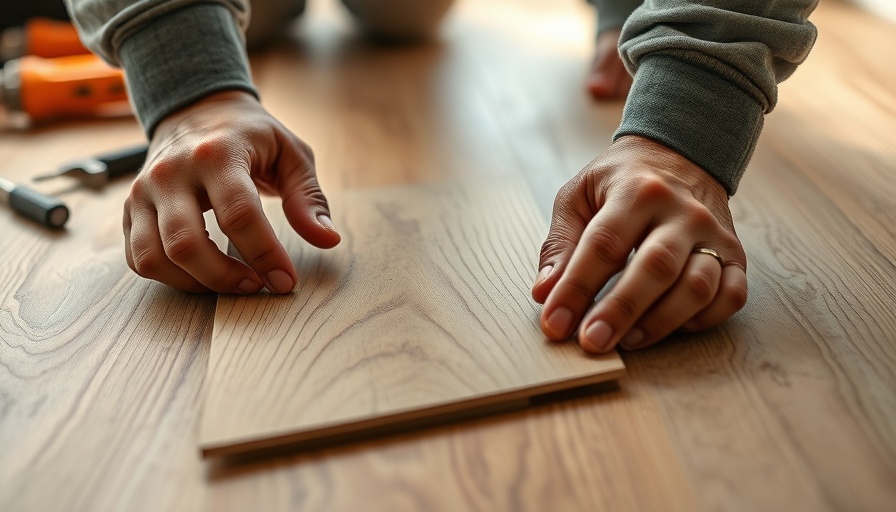
Master the Art of Drywall Repair with Simple Steps!
Small holes and cracks in drywall may seem daunting, but they're common in households and can often be repaired by homeowners with a bit of knowledge and the right tools. Whether it's from a mishap during moving furniture or an accidental encounter with a doorknob, knowing how to address these imperfections can enhance your home's aesthetics and maintain its value.
Essential Tools and Materials for Your Repair
Before you dive into the repair process, it's crucial to have the right tools at your disposal. For a successful drywall fix, you'll need:
- A putty knife – Ideal for applying spackle smoothly.
- A sanding sponge – To ensure the area is prepped correctly.
- A work light – This helps illuminate flaws that could otherwise be overlooked.
- Fine-grit sandpaper – To finish sanding after the spackle dries.
- High-quality spackle – Lightweight, non-shrinking compounds are recommended for small holes.
- Clean rags – For dusting and cleaning surfaces as you work.
- Paint – To blend the repaired area with the surrounding wall.
Step-by-Step Guide to Fixing a Hole in Drywall
Now that you have what you need, let's walk through the repair process in six easy steps:
Step 1: Illuminate the Area
Before you start, turn on your work light. This illumination reveals all imperfections, ensuring you don’t miss any spots that need fixing. Addressing everything at once prevents future rework.
Step 2: Prepare the Surface
Use a fine-grit sanding sponge or a putty knife to sand down loose or peeling edges around the hole. This step guarantees that your spackle will adhere effectively to the drywall surface.
Step 3: Clean the Area
After sanding, dust will inevitably linger. It's essential to remove this debris using a damp rag; failure to do so can compromise the spackle's adhesion.
Step 4: Apply Spackle
With your clean surface ready, apply a generous amount of spackle to the hole using your putty knife. Press firmly to fill the hole completely, ensuring the mixture is spread evenly across the area.
Step 5: Drying Time
Patience is key here! Allow the spackle to dry for at least one to five hours, depending on your climate conditions. Rushing this phase might lead to a less-than-perfect finish.
Step 6: Sand and Paint
Once dried, use a fine-grit sanding sponge to level the surface. Finally, paint over the area with the same color as your wall. Voila! You’ve successfully repaired your drywall!
The Value of DIY Home Repairs
Learning how to fix drywall holes not only saves you money but also empowers you to take charge of your home maintenance. By acquiring new skills, you keep your living space looking pristine and can tackle other renovation projects down the line.
Common Pitfalls to Avoid
A few common mistakes can hinder your drywall repair. One is applying the spackle too soon without proper drying time, which can lead to unsightly blemishes. Additionally, failing to clean the surface thoroughly can result in poor adhesion, leading your repair to crack and peel over time. Understanding these pitfalls allows you to achieve professional-looking results effortlessly.
Resources and Tools for DIY Enthusiasts
Several online tutorials and home repair workshops can help you hone your skills. Do not hesitate to seek guidance from professionals or seasoned DIYers. Engaging with communities focused on home renovations can further fuel your enthusiasm for DIY projects.
Armed with these steps and insights on drywall repairs, you're now capable of tackling this common household project like a pro! Not only will you enhance your home, but you'll also cultivate the satisfying skill of DIY home repair.
To keep your home looking its best and learn even more about DIY home improvement, sign up for our newsletter and become a savvy homeowner!
 Add Row
Add Row  Add
Add 




Write A Comment